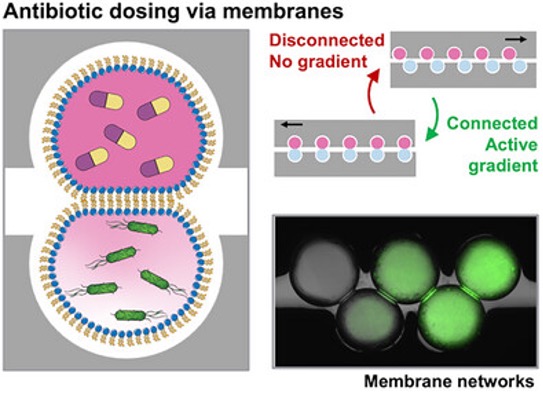New publication in Small on a biohybrid artificial cell system for mimicking infections in cellular and tissue contexts.
Congratulations to Dr. Strutt, Dr. Jusková, with co-authors!

Abstract
Treating bacterial infections is dependent upon their site within a biological system, where the cumulative role of membrane transport is challenging to resolve. In this work, a cultivation method based on droplet interface bilayers (DIBs) is established. The architecture of infections in both cellular and tissue contexts is crafted where individual droplets serve as artificial cells infected by intracellular bacteria, or as interconnected units in a tissue-like structure. Through spatio-temporal control over droplets, addition, withdrawal, and sequential antibiotic gradients are tailored acting upon living bacteria. With droplet networks mimicking tissues, it is showed that the treatment response is dependent on the number of the cell-like barriers, corresponding to the number of membranes from an antibiotic source, here described as the membrane depth. Through mathematical modelling a correlation is revealed between the membrane depth of each bacterial population, the antibiotic distribution and thus the treatment efficacy. Ultimately, this approach holds promise as an in vitro bioassay for understanding the response of intracellular bacteria to antibiotics, developing new antibiotics, designing biologically inspired materials, and underpinning emerging bioprinting approaches.
Read full publication external page here.
R. Strutt, P. Jusková, S. F. Berlanda, S. D. Krämer, P. S. Dittrich, Engineering a Biohybrid System to Link Antibiotic Efficacy to Membrane Depth in Bacterial Infections. Small 2025, 2412399. external page https://doi.org/10.1002/smll.202412399